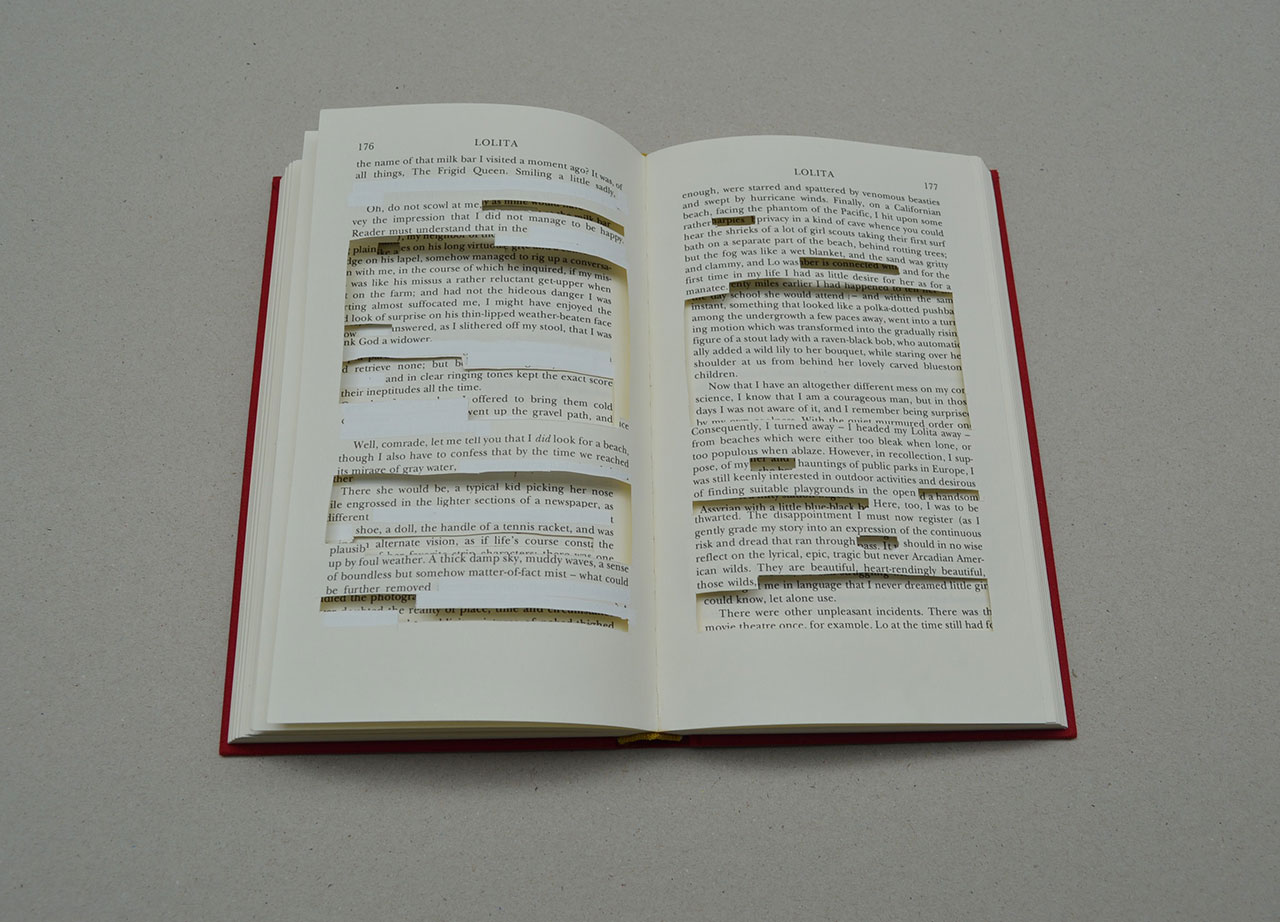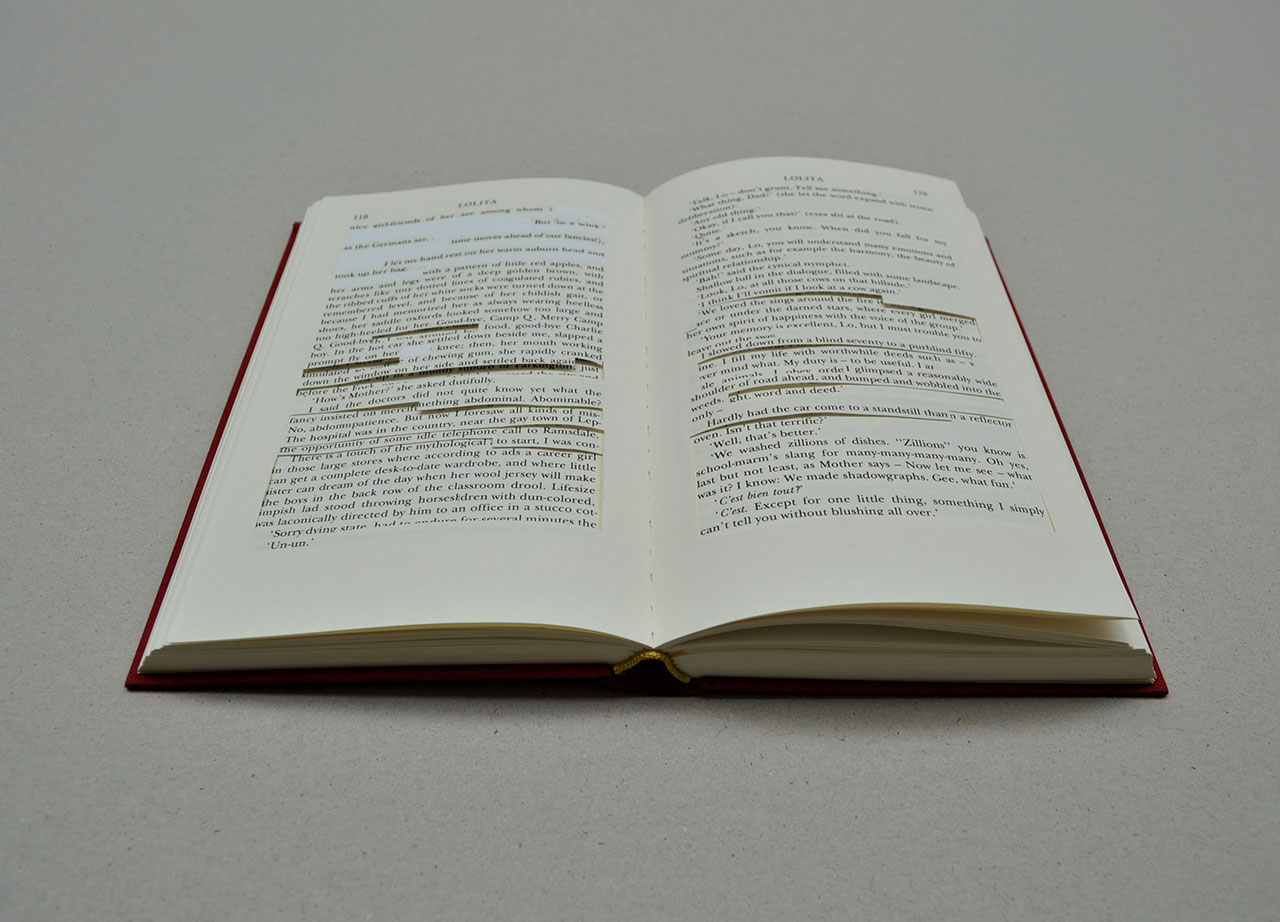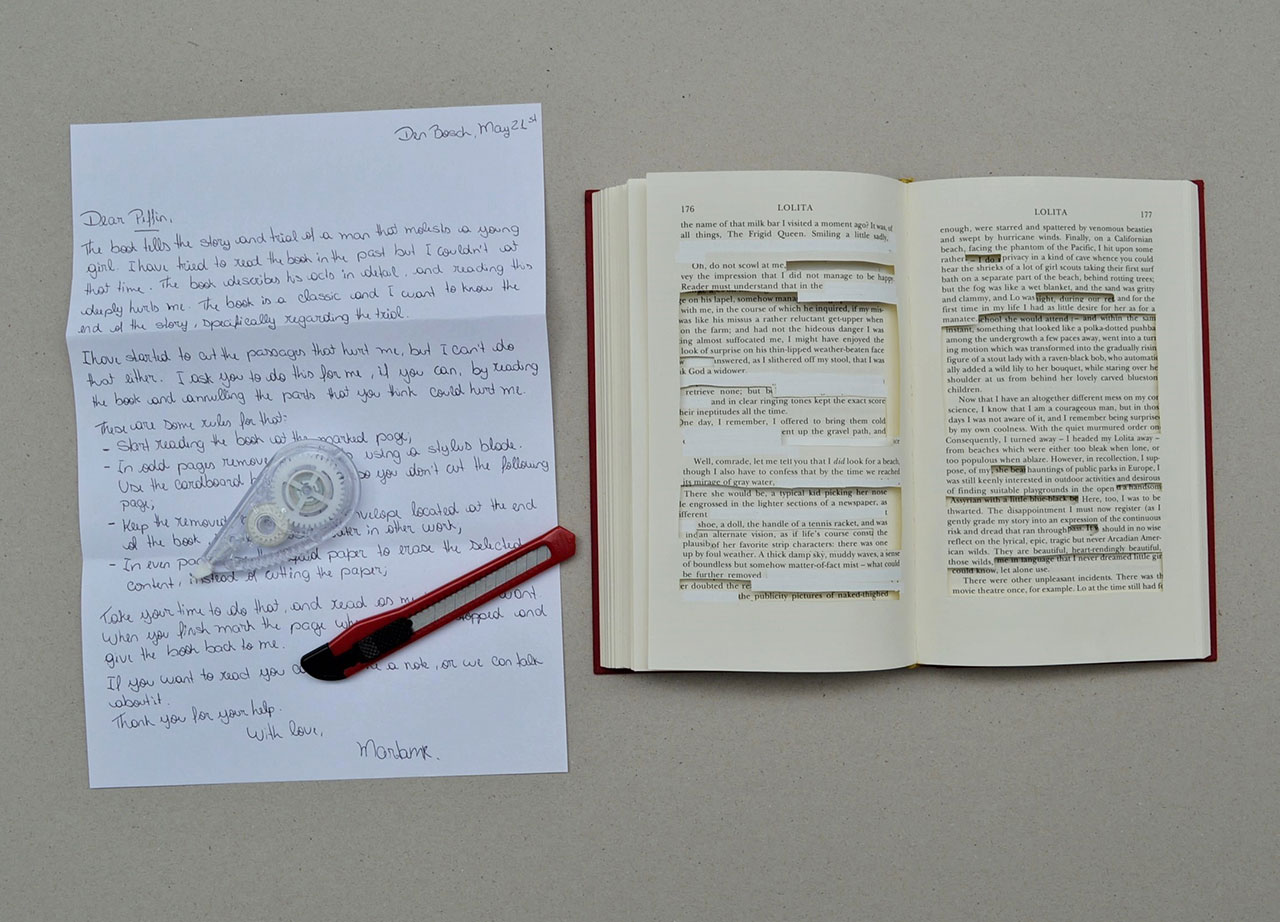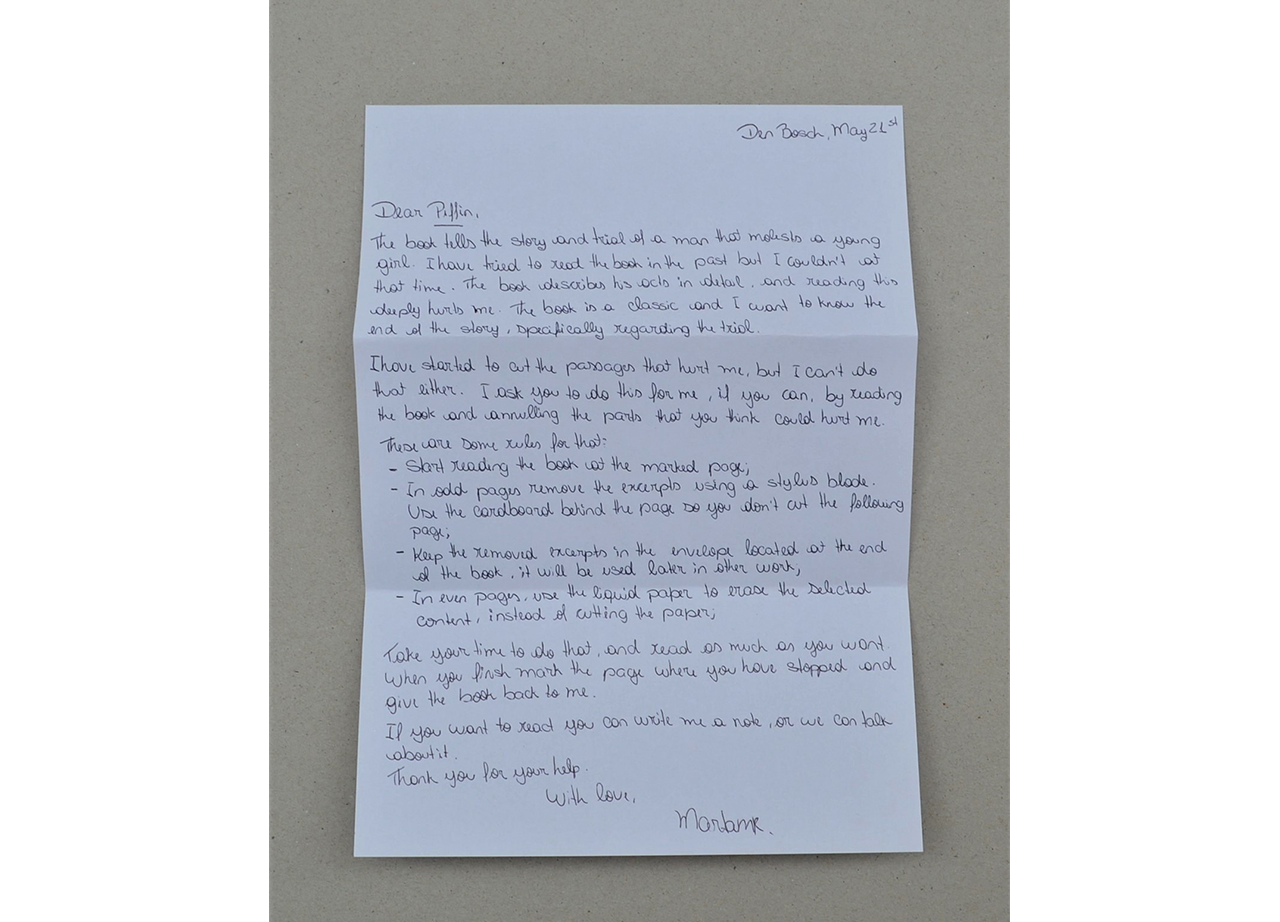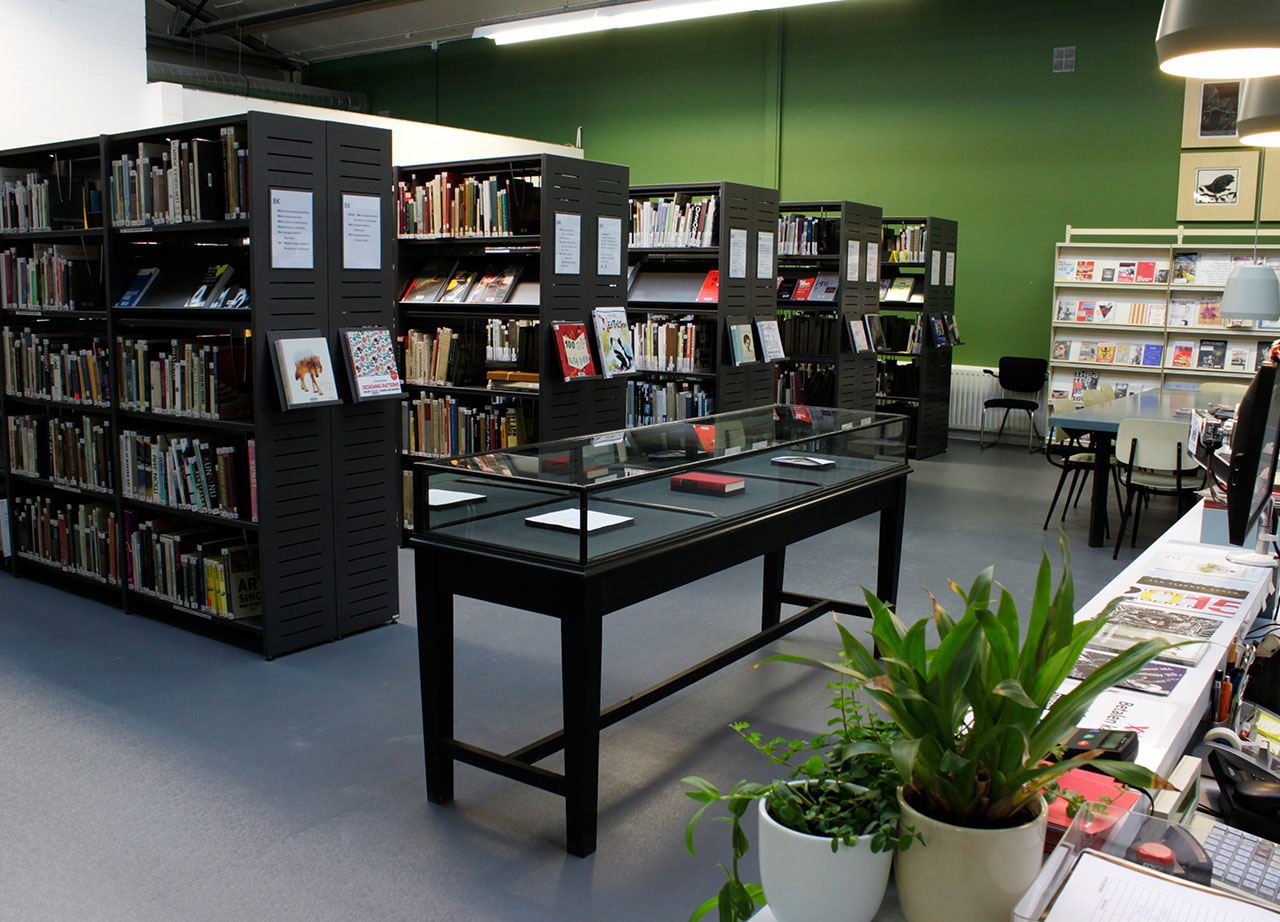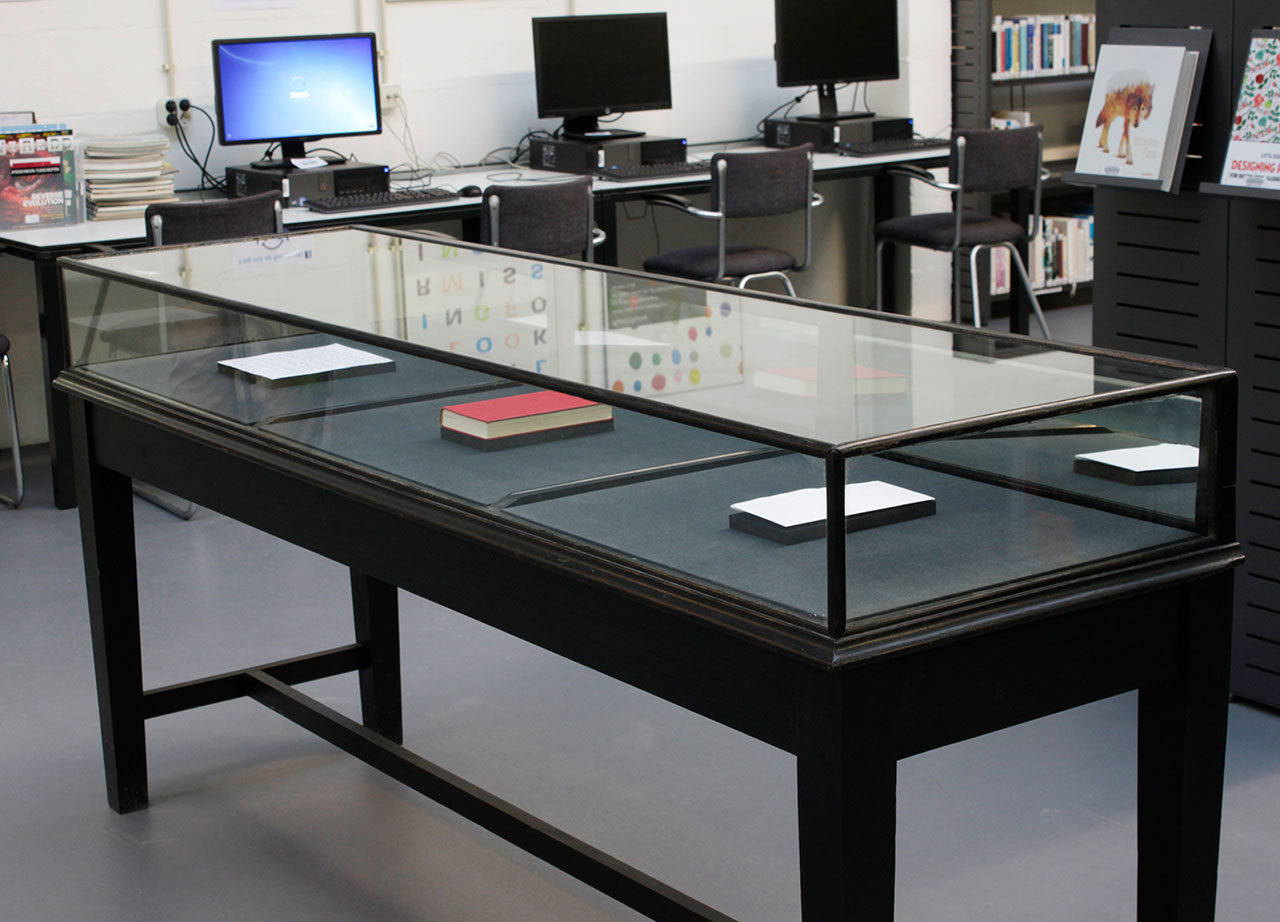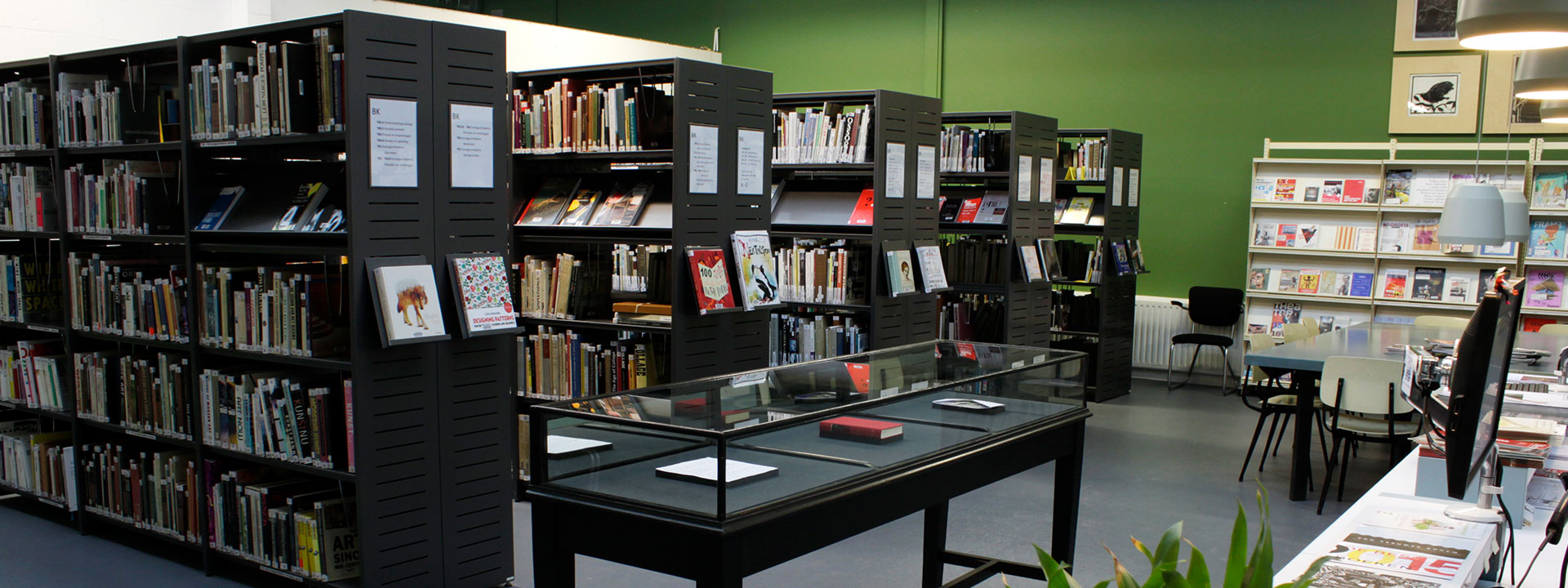At first glance the work of Marta Masiero has a lot of common with what we now identify as “participatory art”, and as it indeed has some elements that fit the category, some other elements escape these boundaries and provide for an extra quality beyond this definition. In most of participatory art the viewer or participant is drawn into the process of realization and most times is also the addressee of the work. In Masiero’s work, however, the aim is not so much the participant as an object. It is more the artist herself to which the address is aimed and what constitutes the operation of the work. The work consists of interactions and exchanges with people, where often the “exchange” is shaped via a third object, the object and receptacle of encounter, the extra participant.
Case of Lolita
In “Reading Lolita for me”, 2015–2016, Masiero asked the participants to cut out the parts of the book she said were too hard for her to process. In line of the books’ familiarity the reasons behind this request are imaginable, they are approachable. The artist here asks her audience to get involved in issues related to her own subjectivity and history. What is produced in between though is a strange object. What is left is a book presented with the traces of this reduction. It is a non-space, a non-interaction: nothing is exchanged other than a prevention of. The cut-out parts of the book are a negative space. It is an omission that is produced, a lack. It is the presentation itself, a trace of what has passed between artist, participant and object. The artist speaks about her work in terms of healing. Now, how to understand and perceive such a notion? How can an omission heal?
In the history of the dematerialization of the artwork the emphasis became more on the process, ritual and interaction rather than the object. In the case of Lygia Clark —an artist of great interest to Masiero — her practice led her over the edge of the necessity to the object. The object stands the chance of getting lost of disappearance when process and its effect become the dominant operations of exchange. It is the logic outcome of the rationale of furthered abstraction of artistic and abstract exchange as a topic of research. The object has detached itself from its maker. In the case of Lygia Clark it produced a crisis, an obstruction to the possibility of making art. Now, what is this feeling of “crisis” and “lack” if the logic outcome is more of a therapeutic nature? In the work of Masiero it is this threshold moment, this return and need to the artistic object that is at stake here.
Not to tip over, to fall into, how to hover?
Judith Butler (2005) argues in “Giving an Account of Oneself” that men’s subjectivity is not a given, it is not already in place, born out of one’s individual existence. It instead is constituted in the interactions with the outside and other subjects. Stronger even: we don’t exist as subjects other than in the exchange with the other. In accordance with this idea connection through the third object (the artistic proposition), understood as that what is splitting off from either oneself as the sender/producer or from the receiver, may be the agent to recognition of oneself as of the other.
This splitting of maybe is a traumatic moment as well, but one that is needed to recognize the split in each one of us. In order “to survive the crisis”, to approach that what is damaged, hurt, traumatized within one has to delve for this moment. A dialogue is needed to do so. This maybe is what was causing Lygia Clark’s crisis: the lack of the third participant, the agent.
In our scattered time we all look for identity knowing that this is beyond the prospect nor desire, if one looks for solid territory and template formats. How to reconnect? Such a dialogue can occur around the missing object as established in the Lolita-case.
